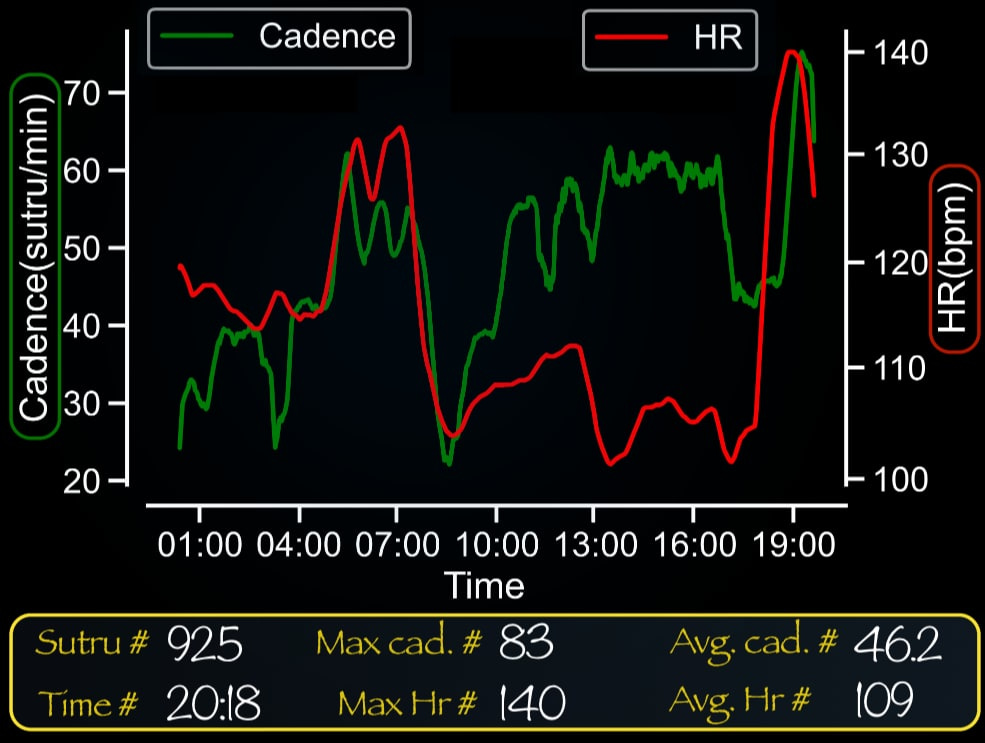Namaste. Best wishes on Vasant Utsav. Basant Panchami marks the beginning of this 40 days of Utsav, a transition from winter's chill to the blossoming vibrancy of spring. It's a time to celebrate love, and creativity of the nature and also honour the creative forces of knowledge and arts, symbolised by the worship of Sarasvati. Maa Sarasvati, the embodiment of knowledge, arts (Kala) and sciences (Vidyas) is a form of Shakti. As a Kshatiya (one practicing warrior arts), we are in essence an upasak: and sadhak: of Shakti. May her blessings guide us on our journey of the Dhanurved: Kalas and Vidyas.
Dhanurved: Kala & Vidya
Is it correct to say Karlakattai, Silambam, Mudgar or Kuthu-Varisai as Sanatan arts? Are there any treatises that mention this? Who are the authors of these? If you have such questions then read our featured article on Understanding Dhanurved:. We delve into the intricacies of Dhanurved: backed up with various standard treatises and the current warrior traditions. Keep a look at the upcoming articles in the series which are going to bring you some solid referencible information on all arts Dhanurved:.
For now Here is an overview of Kalas, Vidyas and Dhanurved:. In Sanatan tradition the arts are generally classified into 64 primary categories out of which five arts come directly under Dhanurved: or Warrior arts. These include weapon wielding, bare-hand punches, strikes & blocks etc. The scientific knowledge systems are classified into four out of which the one considered the most important (by likes of Shukracharya, Adi-Shankaracharya or Chanakya) is the Dand-niti which includes Warrior arts and also the sciences, management and Dharm: (duties) of people practicing those arts (Kshatriya Dharm / Raj Dharm).
The Ayurved: Corner
MallaPuran: on Ritu Charya of Hemant, Shishir & Vasant (Winters & Spring)
Vasant Panchami is a reminder that the days of winters are soon going to bid bye. Hemant, Shishir & Vasant are one of the best seasons for exercising and gaining strength. As per Dhanurved: and Ayurved: it is the time when we can push ourselves more during exercises, replenish ourselves with good nutritious seasonal food and sleep more in these long dark nights. The winter season is loved for its delicacies, be it Til-Kut (sesame & jaggery) sweets, Gajar ka halwa (carrot sweet), bagad/makke ki roti and chane ka saag. All these nuts and seeds, heavy grains and millets, cereals, pulses and green veggies are good in so many ways. In the metrics of current times, sesame (especially unhulled) is a good source of calcium, and all these nuts like walnuts, flax have anti-inflammatory properties to help in recovery. The higher metabolic rate of winters can help in digesting those complex carbs in heavy grains of the season. Let us see what Dhanurved: recommends us to eat in this season for maximum benefit.
मार्गशीर्षादिचैत्रपर्यन्तं पूर्णं कुर्याद् श्रमं बुधं।। २० fहिमयोगो बलं तत्र भक्षणं कुरुते दृढम्। पूर्णश्रमस्य योगेन वर्धते जठरानलः॥ २१ गोधूमपिष्टकेनापि पाकांश्चैन बहूनपि। गुणान्करोति संयुक्तो घृतेनापिगुडेनच॥ ९३ अन्नादष्टगुणं पिष्टं पिष्टादष्टगुणं पयः। पयसोष्टगुणं माषं माषादष्टगुणं घृतम्॥ ९६
Meaning: The five months of beautiful winters (Hemant & Shishir Ritu) and spring (Vasant Ritu) are ideal for heavy workouts (starting with Margshirsh (mid November) and ending in Chaitr (ending weeks of April)). Since winters increase the metabolic fire, this in-turn increases the food in-take & digestion leading to increase in power and energy with which we can get more effective and heavy workouts done.
In Hemant heavy food with complex grains as the base and a variety of sweets with ghee and jaggery are recommended. It is noted that the complex grains are eight times superior to simple grains like rice, Milk (Desi cow or A2) is eight times superior to complex cereal flours. Masha/Urad daal (and other heavy pulses) is eight times that of milk and ghee (A2 traditional bilona) is eight times superior to Urad.
Grains, pulses and seeds that the new harvest brings have complex carbs, proteins and all the nourishment for the season. Making a milk-porridge (daliya) of the broken grains, pulses, seeds and nuts works great. These will give enough fuel to keep making progress and any supplements including whey protein will just not be needed.
Updates on Abhyas:
When the Dhanurved: texts themselves say that it is time to do Purn-Shram: then what else do we need to do long Karlakattai Japa. In the last month of Savan Satr batch of Angad, while we are focusing on mastering transitions between Sutrus & small flows, we are also increasing our strength-endurance by performing the same Sutru for more than 10, 15, or 20 minutes going for Purn-Shram:. This all is possible because of the last few months working on foundations of Sutrus, correcting forms with the help of cues.
Here are two links of short video compilations from our last Satr which was full of fun, learning and success stories (more on this in next newsletter).
Below you can see the plot of one of the Pin Sutru Japa sessions where we did 925 Sutrus in 20 minutes (yes, missed touching 1008, hopefully next time :). The heart-rate (HR- red) and pace (cadence - green) follow each other quite closely, implying an obvious correlation between the two. We did multiple variations in different speeds. The sudden jumps in pace and HR in the plot are when we changed the variation. In the end we did go all out with high speed of 83 sutru/min and my heart-rate pumping at 140.
Just in case someone is wondering how effective Karlakattai is for training specific HR zones, well this shows that you can totally target any zone including the aerobic fat-burning zone for long duration without any high impact on your joints. This Karlakattai session was preceded by 25 minutes of MeiPadam which already got my HR at around 90 - 110 bpm. The ending 10 minutes Shavasan: could bring HR back to around 75 bpm.
We are just beginning our Vasant Angad (beginners) batches & also a Bhama intermediate batch for this year.
Contact or head on to the link above to know more.
Echoes from Shaastras
Allow me to take you on a poetic journey through the enchanting Hemant Ritu, as depicted by the revered sage Maharishi Valmiki in the 16th Sarg: of Aranya Kand from the Adi Kavya Ramayan. The verses capture the essence of this season with unparalleled grace and elegance. It was difficult to choose which lines to keep and which ones not to but I took some anyway.
अयं स कालः सम्प्राप्तः प्रियो यस्ते प्रियंवद। अलङ्कृत इवाभाति येन संवत्सरः शुभः॥4॥
सेवमाने दृढं सूर्ये दिशमन्तक सेविताम्। विहीनतिलकेव स्त्री नोत्तरा दिक्प्रकाशते॥8॥
रविसङ्क्रान्तसौभाग्य स्तुषारारुणमण्डलः। निश्श्वासान्ध इवादर्शन्छन्द्रमा न प्रकाशते।॥13॥
ज्योत्स्न तुषारमलिना पौर्णमास्यां न राजते। सीतेव चातपश्यामा लक्ष्यते न तु शोभते॥14॥
अवश्यायनिपातेन किञ्चित्प्रक्लिन्नशाद्वला। वनानां शोभते भूमिर्निविष्टतरुणातपा॥20॥
स्पृशंस्तु विमलं शीतमुदकं द्विरदस्सुखम्। अत्यन्ततृषितो वन्यः प्रतिसंहरते करम्॥21॥
एते हि समुपासीना विहगा जलचारिणः। नावगाहन्ति सलिलमप्रगल्भा इवाहवम्॥22॥Lakshman says: O sweetspeaking brother, the season which is dear to you has arrived. It appears the auspicious year is going to be embellished with this season. As the Sun has resorted to the south direction (Dakshanayan) , the north devoid of (the Sun) shines like a woman without Tilakam (the vermilion mark on the forehead). With the radiance of the Sun dimmed, with its orb reddened by frost, the moon does not shine clear, like a mirror blurred with breath. On a fullmoon night the beams of the moon faded by forest look pale, dull like Sita scorched (tanned) by the heat of the Sun. As the meadows are wet with dewdrops, the land looks delightful with mild Sunlight shining on the surface. The wild tusker, extremely thirsty, touches the clean, cold water joyfully, but immediately withdraws its trunk unable to bear the cold. Just as inefficient warriors do not enter the warfield, aquatic birds sitting near water do not venture to take a plunge into it.
Explore the full depth of Maharishi Valmiki's portrayal of Hemant Ritu, read the whole Sarga online.
Before we say NamoNamah:
What to practice:
Sri Ram Sadhana workout inspired by Ayodhya Shri Ram Mandir Pran Pratishtha: link
What to read:
The original Atlas by Sattology. The maps and names from the ancient unbroken Sanatan Itihas:. link
What to watch:
21notes Ramayan Series Yudha Kanda. With smooth animations & original references this is one Ramayan: interpretation to look out for. It will certainly encourage you to read the original if you haven’t yet. link




